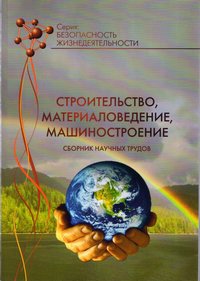To the questionnaire of temperature change in the reactional camera at testing of test species from wood
DOI:
https://doi.org/10.30838/P.CMM.2415.250918.55.131Keywords:
fire resistance of wooden structures, fire protection of wood, fire, flame retardant warehouses, flame retardant coating efficiencyAbstract
Purpose. Investigation of temperature changes in the reaction chamber when testing samples from wood. Methodology. Theoretical and practical studies of fire resistance, increase of fire resistance and processes of heat and mass transfer during combustion of wooden constructions, simulation of combustion processes in conditions of developed fire. Findings. Studies have shown that a significant amount of heat is introduced into the reaction chamber when combusted, as evidenced by a significant increase in temperature throughout the chamber. In samples treated with liquid glass, the process of raising the temperature is slower than in the raw samples, Their temperature exceeds the temperature calculated according to the standard temperature curve of the fire. This indicates that under the flame retardant coating of liquid glass with a thickness of up to 1 mm, the process of decomposition and burning of wood is active. In this, a significant part of heat is allocated, which is indicated by an increase in temperature compared with the temperature in the chamber without specimens. It was established that the process of combustion of samples processed in warehouses 1, 2, 3 proceeds identically in accordance with the general laws. At the initial stage there is a sharp increase in temperature, and then the process of combustion becomes more smooth. This is due to the fact that in the initial period of time (1-2 min) due to inertia, the coating does not expose instantly, but with some delay, because for this it needs a significant warming up to a temperature of 3000C and above. And during this time, simultaneously with the heating of the fire protection coating is an intensive process of heating the upper layers of wood and its active decomposition which is reflected in the increase in temperature on the surface of the samples. Then there is a swelling of the coating. The expanded coating reduces the heat transfer to the wood, which also affects the reduction of the burning rate under the coating (the temperature on the surface of the coating rises, but the increase is more smoothly than at the beginning of the test). Originality. Based on the conducted analytical studies and modeling of the heat-mass transfer process, the effect of combustion on the change of the parameters of combustibility and fire resistance of wood is revealed. Practical value. It is to increase the safety of the operation of construction objects, the safety of evacuation of people and safety of emergency rescue works due to the application of developed effective compositions that reduce the combustibility of materials and increase the time for safe operation of structures in extreme conditions.References
Korolchenko A. Ya. and Korolchenko O. N. Sredstva ognezaschity [Means of fire protection]. — Moskva : Pozhnauka, 2006. — 258 p. (in Russian).
Belikov A. S., Shalomov V. A., Maladyika I. G. and Borsuk O. V. Zabezpechennya vognezahistu budivel shlyahom pidvischennya vognestiykosti metalevih konstruktsiy [Providing fire protection of buildings by increasing the fire resistance of metal structures] Stroitelstvo, materialovedenie, mashinostroenie – [Construction, materials science, mechanical engineering]. PDABA. Dnipro, 2017, no. 98, pp. 38-45. (in Ukrainian).
Belikov A. S., Shalomov V. A., Korzh E. M. and Ragimov S. Yu. Povyishenie ognestoykosti derevyannyih stroitelnyih konstruktsiy za schet snizheniya goryuchesti drevesinyi [Increase of fire resistance of wooden building structures due to reduction of flammability of wood] Stroitelstvo, materialovedenie, mashinostroenie – [Construction, materials science, mechanical engineering]. PDABA. Dnipro, 2017, no. 98, pp. 38-45. (in Russian).
Cadorin J. F., Perez Jimenez C. and Franssen J. M. Influence of the section and of the insulation type on the equivalent time // Proceedings of the 4th International Seminar on Fire and Explosion Hazards. University of Ulster, 2011. pp. 547–557.
Dou H. S., Tsai H. U. and Khoo B. Ch. Simulation of detonation wave propagation in rectangular duct using three dimensional WENO scheme // Comb. Flame. 2012. V. 154. pp. 644-647.
Roitman V. M. Fire testing of Building Materials in View of the Moisture Factor.— First European Symposium of Fire Safety Science (Abstracts).— Zurich. ETH. 2005. - pp. 135-136.
Downloads
Published
Issue
Section
License
Редакція Видання категорично засуджує прояви плагіату в статтях та вживає всіх можливих заходів для його недопущення. Плагіат розглядається як форма порушення авторських прав і наукової етики.
При виявлені у статті більш ніж 25% запозиченого тексту без відповідних посилань та використання лапок, стаття кваліфікується як така, що містить плагіат. У цьому випадку стаття більше не розглядається редакцією, а автор отримує перше попередження.
Автори, в статтях яких повторно виявлено плагіат, не зможуть публікуватися в усіх журналах Видавництва ДВНЗ «Придніпровська державна академія будівництва та архітектури».
Автори, які публікуються у цьому журналі, погоджуються з наступними умовами:
- Автори залишають за собою право на авторство своєї роботи та передають журналу право першої публікації цієї роботи на умовах ліцензії Creative Commons Attribution License, котра дозволяє іншим особам вільно розповсюджувати опубліковану роботу з обов'язковим посиланням на авторів оригінальної роботи та першу публікацію роботи у цьому журналі.
- Автори мають право укладати самостійні додаткові угоди щодо неексклюзивного розповсюдження роботи у тому вигляді, в якому вона була опублікована цим журналом (наприклад, розміщувати роботу в електронному сховищі установи або публікувати у складі монографії), за умови збереження посилання на першу публікацію роботи у цьому журналі.
- Політика журналу дозволяє і заохочує розміщення авторами в мережі Інтернет (наприклад, у сховищах установ або на особистих веб-сайтах) рукопису роботи, як до подання цього рукопису до редакції, так і під час його редакційного опрацювання, оскільки це сприяє виникненню продуктивної наукової дискусії та позитивно позначається на оперативності та динаміці цитування опублікованої роботи (див. The Effect of Open Access).

